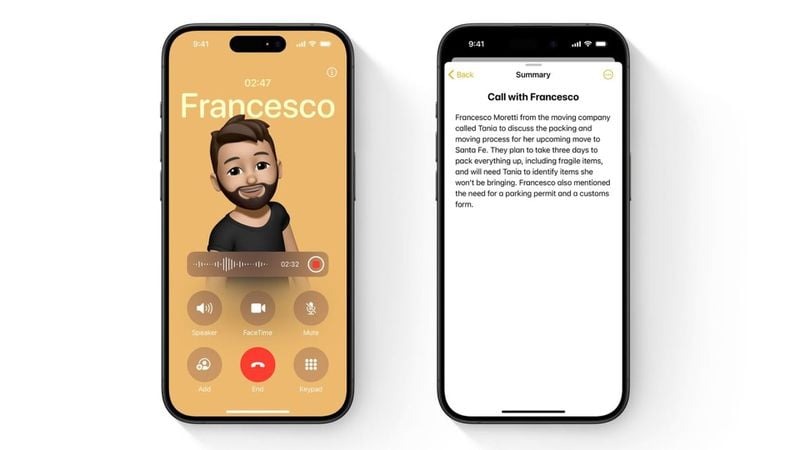If you’ve ever been reading, following instructions, or watching video on your iPad only to have the screen dim at the most inconvenient moment, you’re not alone. Automatic dimming helps preserve battery life, but it can be frustrating when you need your screen to stay bright and active. Fortunately, you can prevent your iPad screen from dimming automatically, and all it involves is a change in settings.
[mai mult...]iOS 18.2: End Accidental Camera Control Presses on iPhone 16
In iOS 18.2, Apple has introduced a thoughtful new feature for the Camera Control button on iPhone 16 models that helps prevent accidental camera launches by requiring the screen to be on before the button will register clicks. Keep reading to gain more control over when the Camera app opens.
Apple located the Camera Control button to make it conveniently placed for quick access, but it can sometimes be too responsive – especially during those moments when you’re not actually trying to take a photo.
Recognizing the potential for this, Apple in iOS 18.2 has added a new Require Screen On feature for Camera Control. It’s particularly useful if you often find your iPhone accidentally opening the Camera app while it’s in your pocket or bag. By requiring the screen to be on first, you can significantly reduce those unwanted camera launches while still maintaining quick access when you need it.
Require Screen On for Camera Control
Here’s how to enable the new option to prevent accidental Camera Control presses:
Set Up Out-of-Office Replies in iCloud Mail
Apple’s native Mail app for macOS does not offer an automatic reply or out-of-office option for standard email accounts. However, if you use an iCloud email address, you can set up automatic replies via the iCloud website.
Surprisingly, Apple’s Mail app still doesn’t feature an auto-reply option. The only exception to this state of affairs is if you have an Exchange or Office 365 account, in which case you should be able to find the option in Mail Settings ➝ Accounts, under the “Account Information” section.
[mai mult...]How to Turn Off Mail categories in iOS 18.2
In iOS 18.2, Apple introduced a major change to the Mail app with its new Categories feature. Categories automatically sorts your emails into four distinct sections: Primary, Transactions, Updates, and Promotions. However, while this organizational system aims to help manage email overload, not everyone is going to prefer the new layout.
Mail Categories attempts to intelligently organize your incoming emails into different sections. Important emails are shown in a “Primary” category, with orders, newsletters, social notifications, and deals organized into three other sections.
The “Transactions” section includes receipts, orders, and deliveries, and aims to make it easy to find orders that you’ve placed and shipping information for those orders. Meanwhile, the “Updates” section includes newsletters, alerts for things like doctor’s appointments and correspondence, and other subscription emails. Lastly, Apple’s “Promotions” category includes special offers and deal emails.
Note that even if an email would normally fall into Transactions, Updates, or Promotions, it will also appear in your Primary inbox if it contains time-critical information. On devices that support Apple Intelligence, the system goes a step further by highlighting priority emails that require action or have deadlines.
[mai mult...]Install Mac Apps on external Storage in macOS Sequoia
If you’re running out of space on your Mac’s internal drive, macOS Sequoia 15.1 includes a handy new feature that lets you install large apps directly to external storage.
Apple is known for charging customers a very high markup for additional storage when buying a new Mac. Given that internal storage usually can’t be upgraded after purchase, it’s no wonder that external drives are a popular solution for many Mac users who want the extra space but don’t want to pay a premium for the privilege.
Until recently, macOS automatically installed new apps downloaded from the Mac App Store to a Mac’s boot drive, which was not particularly helpful to users with dwindling internal storage. In macOS Sequoia 15.1, however, Apple has added a new option that lets you download and install apps that require more than 1GB of storage to an external drive. Anyone working with large apps like Final Cut Pro or Logic Pro, or gamers with space-consuming titles, will surely welcome this ability to download and install large apps to a separate disk.
[mai mult...]Auto-Delete Old Messages Chats on iPhone
Deleting old messages from your iPhone or iPad is a good way to save on your device’s storage space, but going back through your old conversations and deleting them individually would be a tedious and long-winded process.
Fortunately, there’s a simpler way to say goodbye to old messages in iOS – Apple’s mobile operating system can be automated to discard messages that have been on your device for longer than a specific period of time.
For example, it’s possible to have iOS automatically remove any conversations that are older than 30 days, or any messages more than a year old. You can choose your preferred cut-off for old messages by following the steps below. Note that when messages are removed from your device, they’re gone for good.
[mai mult...]Adjust TV App Video download settings on iPhone
If you have an Apple TV+ subscription or you’ve rented or purchased movies via iTunes, you can download the videos to your iPhone and iPad over Wi-Fi or cellular using Apple’s TV app, which allows you to watch them offline.
Apple gives iPhone and iPad users granular control of TV app video download settings. So if you want, you can choose high quality video if you don’t mind them taking longer to download and taking up more storage space. Alternatively, you can prioritize faster downloads that take up less storage, but at the price of video quality.
You can adjust these settings independently for when you’re downloading over Wi-Fi or cellular, which is particularly handy if you don’t have an unlimited data plan or you don’t want to hog your household’s bandwidth. Simply follow the series of steps below to adjust the download quality over the data connection that applies to you.
Adjusting Video Download Settings Over Cellular
Genmoji in iOS 18.2: create custom Emoji in Messages
Apple’s new Genmoji feature lets you create personalized emoji that aim to perfectly match what you want to express, going far beyond the limitations of standard Unicode emoji. Want an emoji of a break-dancing astronaut or a dog playing bagpipes? With Genmoji, you can make it happen.
Unlike standard emoji that are fixed Unicode characters, Genmoji are dynamically generated using on-device AI. They work seamlessly in text, appearing as inline emoji characters in supported apps like Messages and Notes. You can even create Genmoji based on people in your Photos app, making them more personal and expressive.
Requirements and Availability
Currently, Genmoji is only available in the iOS 18.2 beta for developers and public beta testers. The feature also requires Apple Intelligence, which is limited to iPhone 15 Pro/Pro Max and iPhone 16 series models. Apple Intelligence does not currently work in the EU.
Even with a compatible device in a supported region, you’ll need to join a waitlist for Apple Intelligence features like image creation (Settings ➝ Apple Intelligence & Siri). Apple will notify you when access is granted. Note that Apple Intelligence is only available when your iPhone and Siri are set to the same language.
Apple Intelligence is available in English (US) in most regions around the world, while iOS 18.2 adds Apple Intelligence support for English (Australia), English (Canada), English (Ireland), English (New Zealand), English (South Africa) and English (UK).
Compatibility
While Genmoji work best between iOS 18.2 devices, they’re also viewable on devices running iOS/iPadOS 18.1 and later, as well as Macs running macOS Sequoia 15.1 and later.
On older Apple devices or Android phones, Genmoji appear as regular images rather than inline emoji characters. Third-party apps need to specifically add Genmoji support to enable creation and proper display of these custom emoji.
Creating Custom Emoji in Messages
[mai mult...]iOS 18.1: How to Record and Transcribe Phone Calls
From business meetings to family memories, there are countless reasons to record a phone call, but until now, iPhone users have had to rely on third-party apps or complex workarounds. That changes on October 28 with the release of iOS 18.1, which introduces native call recording and transcription powered by Apple Intelligence.
searchable transcripts and AI-generated summaries, all while maintaining Apple’s commitment to privacy and transparency. When you start recording, all participants automatically hear an announcement, ensuring everyone knows they’re being recorded. A visible indicator also remains on screen throughout the call for as long as the recording continues.
To further protect user privacy, all recordings are stored locally in the Notes app with end-to-end encryption, and the new Apple Intelligence-powered transcription happens entirely on your device, meaning conversations never leave your iPhone. Here’s how to make your first phone call recording in iOS 18.1.
Recording a Phone Call
[mai mult...]Hide your iPhone Find My Location without raising suspicion
Ever need a moment of privacy without raising suspicion? If you’re secretly shopping for a gift or planning a surprise party, you might want to temporarily obscure your actual location in Apple’s Find My app on your iPhone without completely turning off location sharing.
Here’s a clever trick that lets you keep sharing enabled while displaying a different location – all by using another Apple device you own.
To hide your actual location, you’ll need to have at least two Apple devices signed in to your Apple Account with Find My enabled. This method works by telling Find My to use a stationary device’s location instead of your iPhone’s.
Start by leaving the device you want to use as your displayed location (like an iPad or Mac) in a convincing spot – perhaps your home or office. Then, take your iPhone and follow these steps:
[mai mult...]

